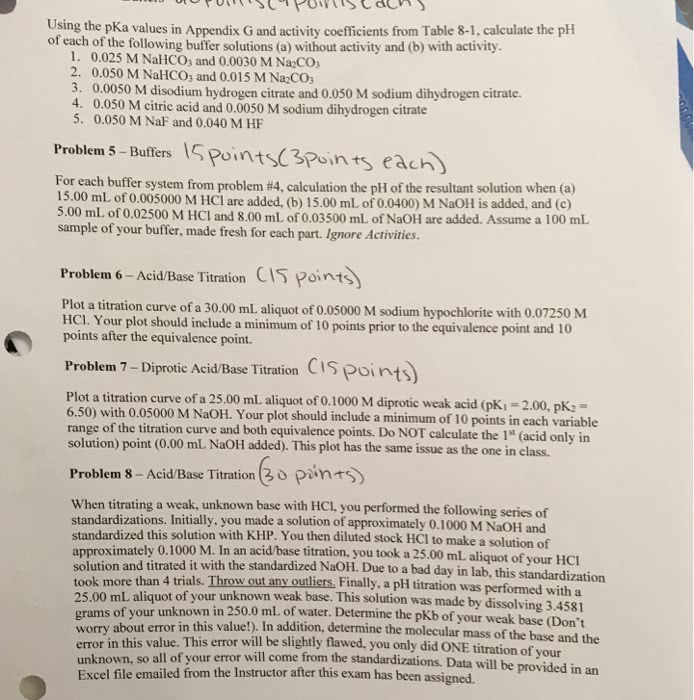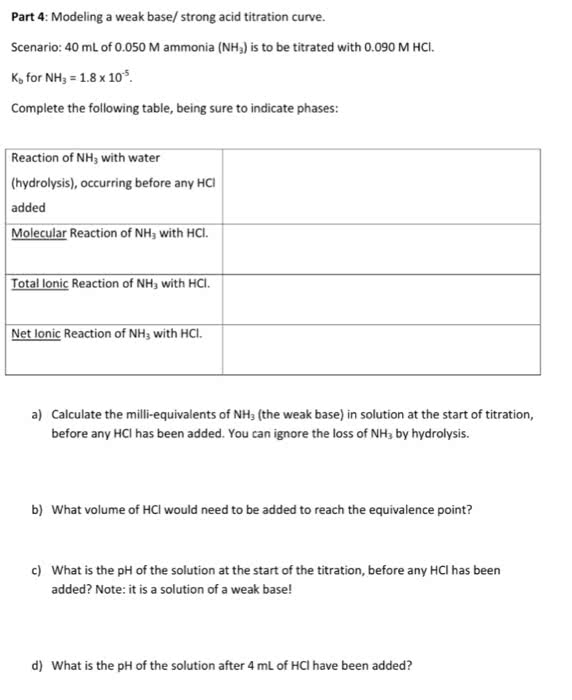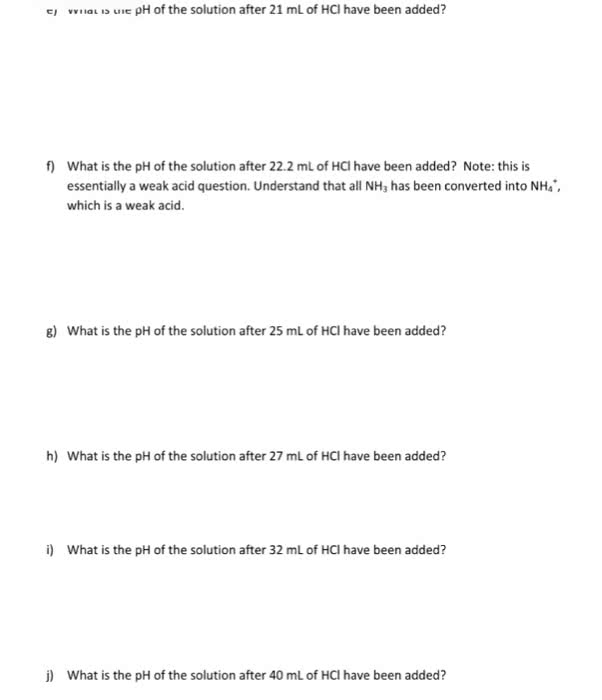1. What is a âback-titrationâ?
2. Why is a back titration necessary in this experiment?
3. Calculate the number of moles of base equivalents in: a) 675 mg CaCO3 b) 135 mg Mg(OH)2 - Base equivalents = number of moles of acid (H+ ) consumed
4. Calculate the number of moles of acid (H+ ) in 33.6 mL of (a) 0.10 M HCl and (b) 0.10 M H2SO4.
5. Calculate the pH of each of the following solutions: a) 0.10 M HCl b) 2.0 x 10-4 M HNO3 c) 0.015 M NaOH d) 12 M HCl
6. Suppose that the pH meter indicates that the pH of three solutions is 2.00, 7.15, and 10.50, respectively. Calculate the [H3O+ ] of each of these solutions in molarity.
7. What quantities are plotted on the x- and y-axes of an acid-base titration curve?
8. What do the rapid changes or âbreaksâ in a titration curve represent?
9. What does the equivalence point in a titration represent?
1. What is a âback-titrationâ?
2. Why is a back titration necessary in this experiment?
3. Calculate the number of moles of base equivalents in: a) 675 mg CaCO3 b) 135 mg Mg(OH)2 - Base equivalents = number of moles of acid (H+ ) consumed
4. Calculate the number of moles of acid (H+ ) in 33.6 mL of (a) 0.10 M HCl and (b) 0.10 M H2SO4.
5. Calculate the pH of each of the following solutions: a) 0.10 M HCl b) 2.0 x 10-4 M HNO3 c) 0.015 M NaOH d) 12 M HCl
6. Suppose that the pH meter indicates that the pH of three solutions is 2.00, 7.15, and 10.50, respectively. Calculate the [H3O+ ] of each of these solutions in molarity.
7. What quantities are plotted on the x- and y-axes of an acid-base titration curve?
8. What do the rapid changes or âbreaksâ in a titration curve represent?
9. What does the equivalence point in a titration represent?



